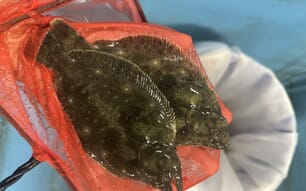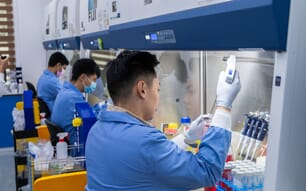
© Gill Health Initiative
Gill diseases remain to be one of the top health and welfare issues in the marine salmon industry worldwide, causing substantial losses to the farmers due to mortality, reduced growth and increased costs for treatment and preventive measures.
GHI’s meetings bring together industry and researchers to work on best practice management to reduce gill disease in salmon farming every two years, sharing field experiences about gill disease and mitigation strategies across the participating countries which include Norway, Scotland, Chile, Ireland and Australia.
The last meeting, hosted by the Norwegian Veterinary Institute (NVI), was held in 2023 near Oslo. It was attended by 115 participants representing research and industry. Twenty six papers were presented covering topics including welfare tools, methods to evaluate and quantify gill health status, challenge models, harmful algal blooms, computer vision for early warning of jellyfish, amoebic gill disease, digital pathology and markers, gene editing, treatments, and several case studies.
For the first time, artificial intelligence (AI) was discussed for use in diagnosis of gill health diseases. There are now many models available for object detection, which have potential for detection of jellyfish and indicators of fish health.
A first time participant in 2023, Raoul Kuiper, veterinary pathologist and senior researcher with the section aquatic biosecurity research at NVI, aims to use his knowledge in molecular and digital pathology to further advance analysis of morphologic data and molecular insights in complex causes of gill pathology.
According to Kuiper: “The GHI meetings are important because despite of more than a decade of intensive work, gill problems are still among the major limiting factors for salmon production. Not unimportantly, they represent a serious welfare concern that affects many fish. Sharing experience and ideas is key."
It became clear during the meeting that solutions to tackle gill diseases in salmonids are lacking. Some solutions are available to improve the detection and amount of data collected but there is still a gap in symptomatic treatment and preventative measures to reduce disease progression.
“I think we do not sufficiently understand the full set of risk factors involved in gill disease, its variants, and its impact on production and welfare. I believe getting a handle on this is prerequisite for building useful decision models, if we eventually want to have a shot at strategic prevention, and intervention,” Kuiper said when asked what the main problems are regarding gill disease.
Frustration about the challenge to quantify gill lesions was also conveyed. It is still difficult to associate the extent of gill lesions with fish performance, as well as to methodologically address the role of individual pathogens. Although this is a complex question, it is central to better understand the problem to a point where action and evidence-based intervention can be prioritised.
Kuiper explains that since the last meeting, more work has been done in analysis refinement of data analysis by implementations of digital methods. With novel technologies such as recirculating aquaculture, computational approaches (including AI) being introduced on both fish health care side, and production systems, this meeting will be timely to share the state of affairs between the various countries struggling with this challenge. Other topics to be discussed are effects on pathology and welfare and challenges in fish husbandry including lice treatments and salinity changes.

© Hamish Rodger
Morten Lund, director of R&D in fish health and welfare at the Norwegian Seafood Research Fund (FHF) has been a member of GHI since 2018. He expects the main topics for the upcoming meeting will include improved tools to forecast algal and jellyfish blooms, better tools to evaluate gill disease at farm level and by the usage of camera vision and AI, and documentation of preventive measures against gill disease.
“The industry needs tools that precisely and quickly evaluate the extent of gill disease in a cage population and document the effect of treatments and preventive measures”, he explains.
Christine Huynh, chair of the GHI steering committee, is keen for new speakers to take part.
“In this year’s meeting we are focussing more on solutions and mitigation measures. To accomplish this, we are inviting new speakers to take part in GHI. We will also reduce the number of formal lectures to allow more time for workshops,” she says.
If you are interested in joining the activities of GHI register here




